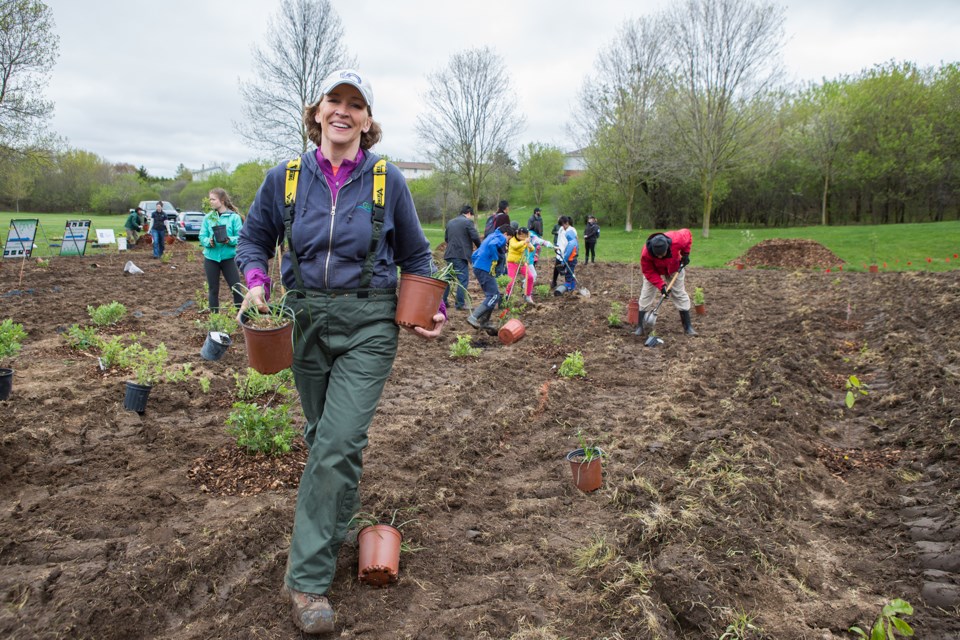A number of Guelph organizations and volunteers have come together to create Guelph's first Community Food Forest.
Located in University Village Park, off Ironwood Road in the city's south end, the large planted area is a way to demonstrate and educate people on food sustainability. Everything planted in the Community Food Forest works in symbiosis, helping and supporting one another to make each survive and thrive.
"We're basically mimicking what a natural woodland ecosystem would do and we're growing food that's desirable to human beings and other wildlife," explains Ashley Thackaberry, one of the volunteers behind the project.
"We're doing it in a way that flows with the natural rhythm of the earth rather than how we grow most of our food today."
On May 14 roughly 100 people, including many children, turned out to plant the large plot. Volunteers will maintain and care for it.
It consists of roughly 500 plants, explains Karen McKeown, who runs the project's web site guelphcommunityfoodforest.org when she's not shovelling mulch and helping water the plants. The variety ranges from small medicinal plants right up to small fruit and nut trees.
"It's built on permaculture principles. Everything works in here works together," explains McKeown.
"For instance, if we put in an apple tree we put shrubs and perennials in beside it, so they have deep roots that will go down and help break up the ground ... and attract pollinators and birds," McKeown said.
A path will wind through the forest and eventually there will be signs posted detailing what each plant is.
All the plants are perennials. No pesticide or chemical fertilizer will be used at the garden.
"Who cares if an apple has a blemish on it," McKeown says with a laugh.
The project got off the ground a year ago through at joint effort that included Transition Guelph, the University of Guelph chapter of the Society for Ecological Restoration, Hanlon Creek Neighbourhood Group, U of G Horticultural Club, Pollination Guelph and the City of Guelph.
The city provided the space and helped turn over and grade the large plot.
"There's a big education factor, the possibility of workshops, students visiting and learning how to put food-bearing trees and shrubs into your backyard instead of just the pretty plants," says Jenn Craig.
"People today don't know much about their food and where it comes from ... this provides exposure and education. It teaches them more about their food and how it is created."
The group has a Facebook page and a newsletter. Upcoming events will be planned and anyone, from any part of Guelph, is welcome to take part.
"This is the type of thing you can do in your own backyard on a smaller scale. We're giving people an example of what's possible," Thackaberry says.
